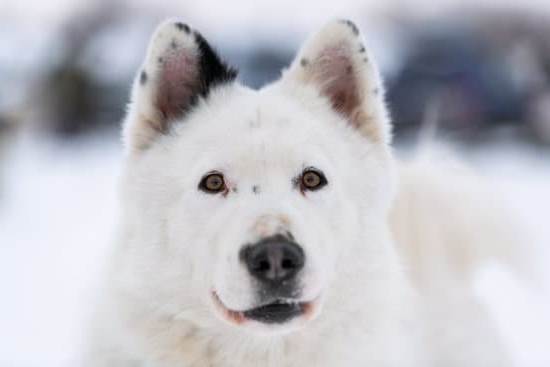Are you struggling with how to train your dog to stop chasing your cat? It can be a challenging behavior to address, but with the right techniques and consistency, it is possible to create a harmonious environment for both pets. Understanding the root of this behavior is crucial in order to effectively address it and create a safe space for all involved.
The first step in addressing this issue is to understand why dogs chase cats. Is it a natural instinct, a form of play, or something else entirely? By gaining insight into the motivation behind this behavior, pet owners can begin to implement training methods that will effectively address the problem.
In this article, we will explore the importance of training your dog, not only for the safety of your cat but also for the well-being of all animals involved. We will discuss setting boundaries, positive reinforcement techniques, distraction and redirecting methods, and the significance of consistency in training. Additionally, we will delve into when it might be necessary to seek professional help and the importance of patience and understanding when building a strong relationship between your dog and cat.
The Importance of Training
Understanding the importance of training your dog to stop chasing a cat is crucial for keeping both your pets and others safe. Dogs have a natural instinct to chase smaller animals, and without proper training, this behavior can lead to injury or stress for the cat, as well as potential trouble in the neighborhood.
By taking the time to train your dog, you are not only ensuring the safety of your pets but also creating a more harmonious environment at home.
Setting boundaries is an essential part of training your dog to stop chasing the cat. This can be done by establishing specific areas in the house where each pet is allowed.
For example, you can create a safe space for the cat by installing baby gates or using tall furniture that your dog cannot access. This will give the cat a place to retreat to if they feel threatened and will also serve as a visual cue for your dog to understand that certain areas are off-limits.
Positive reinforcement techniques are effective in teaching your dog to stop chasing the cat. By rewarding good behavior, such as ignoring or calmly approaching the cat, you are encouraging positive interactions between them. Use treats and verbal praise when your dog listens to commands like “leave it” or “come” when they start to chase the cat. Consistency in using these techniques will help reinforce good behavior over time.
| Technique | Description |
|---|---|
| Positive Reinforcement | Rewarding good behavior with treats and praise |
| Setting Boundaries | Establishing designated areas for each pet in the house |
| Distraction and Redirecting | Using toys and commands to redirect your dog’s attention away from chasing the cat |
Setting Boundaries
When it comes to training your dog to stop chasing your cat, setting boundaries is crucial for creating a harmonious environment for both pets. By establishing a safe space for both animals, you can minimize the chances of any potential conflicts and create a peaceful coexistence.
Here are some ways to set boundaries between your dog and cat:
1. Separate living spaces: If possible, provide separate areas for your dog and cat to eat, sleep, and relax. This will give each pet their own safe space where they can feel secure without the risk of being chased or bothered by the other.
2. Use baby gates or pet barriers: Utilize baby gates or pet barriers to create physical boundaries within your home. This allows your cat to have access to certain areas without being followed or pursued by the dog.
3. Supervised interactions: Always supervise interactions between your dog and cat, especially during the initial stages of training. This allows you to intervene if necessary and prevents any unwanted chasing behavior from occurring.
By implementing these boundaries, you can create a safe environment for both your dog and cat while also preventing any potential conflicts or stress between them.
Now that we’ve discussed how to establish boundaries between your pets in order to create a safe space for both animals, it’s important to consider positive reinforcement techniques as part of the overall training process. Remember that consistency is key when it comes to training, so be patient and understanding as you work towards building a strong and positive relationship between your dog and cat.
Positive Reinforcement Techniques
When it comes to training your dog to stop chasing your cat, positive reinforcement techniques can be incredibly effective. Using rewards to encourage good behavior is a proven method for shaping your pet’s actions and can help create a positive relationship between your dog and cat.
One of the most important aspects of positive reinforcement is timing. When your dog displays the desired behavior of not chasing the cat, immediately reward them with a treat or praise. This will help them associate the action with a positive outcome, making it more likely that they will repeat the behavior in the future.
In addition to treats and praise, you can also use toys as a form of positive reinforcement. For example, if your dog listens to a command to stop chasing the cat, you can reward them by engaging in playtime with their favorite toy. This not only reinforces the desired behavior but also provides mental stimulation for your pet.
It’s important to remember that every dog is different, so it may take some trial and error to find the most effective form of positive reinforcement for stopping your specific dog from chasing your cat.
| Training Technique | Description |
|---|---|
| Treats | Immediate reward with treats when dog exhibits good behavior. |
| Toys | Using toys as rewards for obeying commands. |
Distraction and Redirecting
When it comes to training your dog to stop chasing your cat, distraction and redirection are key techniques that can help change your dog’s behavior. By using toys and commands, you can effectively redirect your dog’s attention away from the cat and towards more appropriate activities.
Using Toys as Distractions
One effective way to stop your dog from chasing the cat is to use toys as distractions. When you notice your dog starting to focus on the cat, offer them a favorite toy or a puzzle feeder filled with treats. This will redirect their attention and give them something positive to focus on instead of chasing the cat.
Training Commands for Redirection
Training your dog with specific commands can also be helpful in stopping them from chasing the cat. Teach your dog commands such as “sit,” “stay,” or “leave it” and practice these commands regularly. When you see your dog getting ready to chase the cat, use these commands to redirect their attention and reinforce positive behavior.
Consistency in Using Distractions and Commands
It’s important to be consistent in using both distractions and commands when training your dog to stop chasing the cat. Every time you notice this behavior, intervene with a distraction or command to redirect their attention. Over time, with consistent reinforcement, your dog will learn that chasing the cat is not acceptable behavior.
By incorporating these distraction and redirection techniques into your training routine, you can effectively teach your dog to stop chasing the cat. Remember that patience and consistency are key in successfully changing your pet’s behavior.
Consistency Is Key
Repeat, Repeat, Repeat
Training your dog to stop chasing cats requires consistent and repeated training. Dogs learn best through repetition, so it’s important to consistently reinforce the desired behavior. Whether you’re using positive reinforcement techniques, setting boundaries, or utilizing distraction and redirection, it’s crucial to practice these methods on a regular basis. Consistency will help your dog understand what is expected of them and ultimately help to break the habit of chasing the cat.
Stick to a Routine
In addition to repetition, sticking to a routine can also play a key role in training your dog. Establishing a consistent schedule for training sessions can help reinforce the lessons and make it easier for your dog to understand what is expected of them. This routine will also provide stability for both your dog and cat, creating a sense of security and predictability in their environment.
Stay Patient and Persistent
Changing a behavior takes time, so patience is crucial when training your dog to stop chasing the cat. It’s important not to get frustrated or give up if progress seems slow. Stay persistent and continue with the training regimen, even if there are setbacks along the way.
Remember that every dog is different, and some may require more time and repetition before they fully grasp the concept. With dedication and consistency, you can successfully train your dog to coexist peacefully with your cat.
By understanding the importance of repeated training and staying patient and persistent, you can effectively train your dog to stop chasing the cat.
Seeking Professional Help
When it comes to training your dog to stop chasing the cat, sometimes seeking professional help from a trainer or behaviorist may be necessary. If you have tried various techniques and methods without success, it may be time to consider bringing in a professional to assist you. Here are some indicators that it may be time to seek the help of a professional:
- Repeated failed attempts at training
- Aggressive behavior towards the cat
- Inability to control your dog’s impulses
A professional trainer or behaviorist can assess the situation and provide personalized guidance on how to address the issue effectively. They have the expertise and experience to understand the root cause of your dog’s behavior and can tailor a training plan specifically for your pet.
Working with a professional can also provide you with valuable insights and techniques that you may not have considered before, enhancing the effectiveness of your training efforts. They can offer specialized advice on how to modify your dog’s behavior and create a harmonious environment for both your dog and cat.
Remember, seeking professional help is not a sign of failure as a pet owner; rather, it demonstrates your commitment to providing the best care for your animals. With their guidance, you can work towards fostering a peaceful coexistence between your dog and cat.
Patience and Understanding
In conclusion, training your dog to stop chasing your cat is a process that requires time, effort, and patience. It is important to understand the reasons behind your dog’s behavior and to establish boundaries to ensure the safety of both your pets. Positive reinforcement techniques such as rewards and distractions can be effective in redirecting your dog’s attention away from chasing the cat.
Consistency in training is crucial, as well as seeking professional help if needed. A professional trainer or behaviorist can provide guidance and support in modifying your dog’s behavior. It is also essential to have patience and understanding throughout the training process, building a strong and positive relationship between your dog and cat.
By following these steps and being patient with the process, it is possible for you to train your dog to stop chasing the cat. With dedication and consistent training, you can create a harmonious environment where both pets can coexist peacefully within your home. Remember that every pet is unique, so be sure to tailor your training approach to suit the specific needs of your dog and cat.
Frequently Asked Questions
How Do I Train My Dog to Leave the Cat Alone?
Training your dog to leave the cat alone involves positive reinforcement and patience. Start by teaching your dog basic obedience commands like “sit” and “stay.” Then, gradually introduce your cat in a controlled environment, using treats to reward calm behavior around the cat.
How Do I Get My Dog to Stop Obsessing Over My Cat?
If your dog is obsessing over your cat, it’s important to provide mental and physical stimulation through activities like daily walks, interactive toys, and obedience training. Additionally, create a safe space for the cat where the dog is not allowed to go to give the cat a sense of security.
How Do You Desensitize a Dog to a Cat?
Desensitizing a dog to a cat requires gradual exposure while ensuring the dog remains calm. Start by keeping them separated and gradually allow them to be in the same room with careful supervision. Use positive reinforcement when the dog shows calm behavior around the cat.

Welcome to the blog! I am a professional dog trainer and have been working with dogs for many years. In this blog, I will be discussing various topics related to dog training, including tips, tricks, and advice. I hope you find this information helpful and informative. Thanks for reading!





